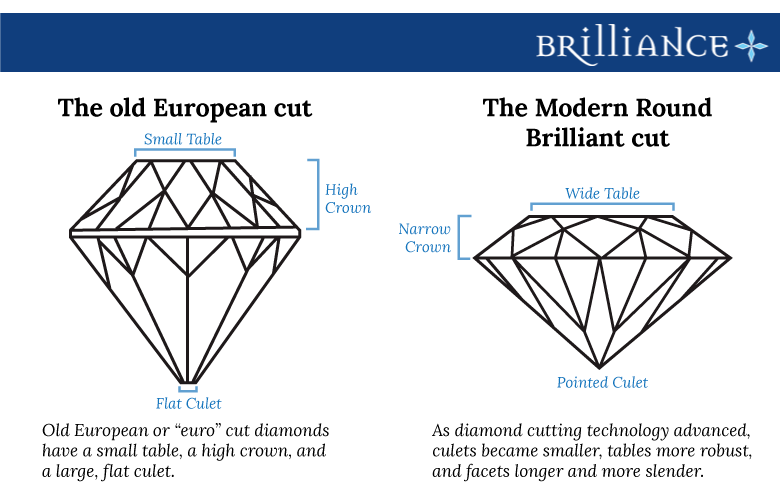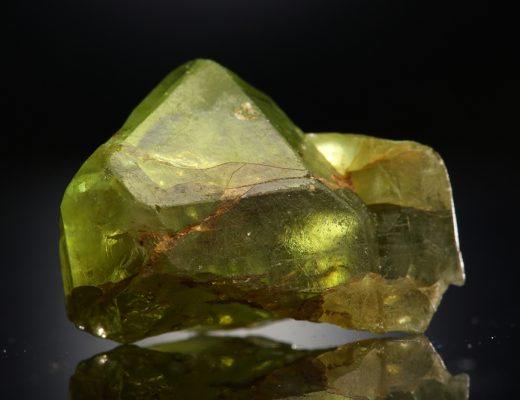In the late 19th century, the old European cut (also known as the “euro” cut diamond) was one of the most popular cuts for diamonds and the standard for a round shape. In a time when diamonds were much more scarce, these diamonds were painstakingly cut by hand in order to get the best out of the rough stone.
As modern diamond cutting technology advanced, however, this beautiful, antique cut fell from favor. In fact, until recently, euro cut diamonds were regularly recut into the similar but “flashier” modern round brilliant cut. Oftentimes these euro cut diamonds would be devalued by 20 to 30 percent, due to the amount of carat weight lost during the recut.
However, the tides are turning for this distinctive diamond. The euro cut’s delicate polish and textured sparkle is now catching the eye of modern diamond lovers.
What Exactly Is A Euro Cut Diamond?
The old European cut is a round shaped diamond cut. It has 58 facets, similar to the round brilliant cut. Unlike modern brilliant cuts, which are designed to reflect the most white light possible, euro cut diamonds were known for their “fire,” or the flashes of different colors when moved under low light. This is due to the placement and proportions of the facets within the euro cut, which includes a high crown, small table, and a large, flat culet.

In order for a diamond to be classified as a euro cut, it must meet three of the four following GIA criteria:
- Culet Size: Must be large or slightly large
- Table Size: Must be less than or equal to 53 percent
- Crown Angle: Must be more than or equal to 40 degrees
- Lower Half Length: Must be less than or equal to 60 percent
The criteria for euro cuts may be strict, but this is in many ways necessary to stay true to the antiquity of the diamonds. The characteristics of a euro cut diamond serve as a hallmark of an era for the diamond industry.
Peter Yantzer, former executive director of the AGS told the National Jeweler, “The diamonds were, in fact, brilliant. You could not miss it, you could catch a white (brilliance) or colored (fire) flash out of the corner of your eye from across the room because the sparkle was so large.”
Why The Euro Cut Diamond Is Gaining Popularity
Jewelers around the world have seen a rising interest in antique stones and cuts, including the old European cut. This is due to many factors, including…
- The rareness of euro cut diamonds
- A pushback against the popularity of large flashy diamonds
- The appeal of the “history” of antique diamonds, many of which date back to the Victorian, Edwardian, and Art Nouveau eras
The increased demand has also increased the euro cut’s value. In many cases, their value is comparable with the modern brilliant cuts into which they were once reshaped!

Knowing more about euro cut diamonds is important when deciding which diamond is perfect for you, or your bride to be. Vintage diamonds are in, and the unique brilliance they boast is sure to turn heads. If you want a vintage cut like the euro cut, it’s best to contact a diamond expert to assist in the search for these rare stones.



